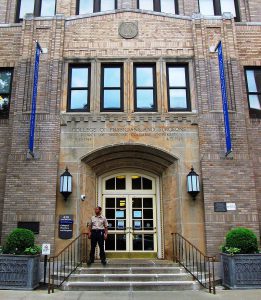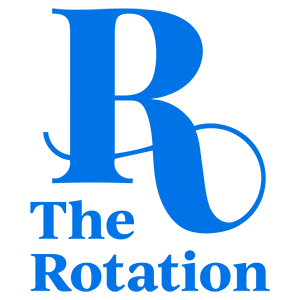The patient and the clinician sit together in the small exam room, or look into the cameras of their respective computers.
Big questions emerge: Why are you here? How does your body feel? What does that symptom mean? The stories that unfold in these moments are at the core of narrative medicine, an interdisciplinary field founded at Columbia University in the early 2000s.
The field asserts that asking and responding to such big questions in a dignified, compassionate, and generous way requires a clinician to have not just medical know-how, but narrative intelligence—and dedicated training.
“You’d better be good at pharmacology, you’d better be good at physiology, you need to know your organ systems, and you need to know how to elicit and attend to stories,” says Dr. Sayantani DasGupta, MPH, a co-founder of narrative medicine.
Narrative medicine—which counts “action toward social justice,” “inclusivity,” and “tolerating ambiguity,” among its six core tenets—is part of a growing movement to better integrate skills from humanities disciplines into medical training.
These skills— which apply to a clinical setting—include reading closely, listening attentively, and understanding how power structures like race, class, and gender can play an outsized role in everyday encounters.
Stories are the fundamental building blocks of how we relate to one another.
Narrative medicine is one model for building the skills that clinicians need to connect with their patients. Yet it is more than just “people skills” or bedside manner. It is a rigorous discipline that draws inspiration from humanistic studies broadly, with special emphasis in philosophy, literary studies, and the creative arts.
Narrative medicine is as much about individuals as it is about systems. It is a methodology—a framework—that clinicians, patients, researchers, and practitioners can use to respond to the situations they find themselves in.
Since its inception just over two decades ago, narrative medicine has become part of the curriculum at a number of American med schools, and studies on its impact and efficacy are emerging around the globe.
While critics say more scientific research is required before narrative medicine becomes a common fixture in clinical practice, they concede that the “healing power of narrative is repeatedly attested to.” In other words: the foundations to the discipline are definitely solid.
“Stories are the fundamental building blocks of how we relate to one another,” says DasGupta.
A brief history of narrative medicine
DasGupta, a writer by inclination and pediatrician and senior lecturer in narrative medicine at Columbia University, reflects on her own training at the Johns Hopkins School of Medicine as “cutting-edge in hard sciences,” but lacking the same rigor when it came to humanities.

During her residency at Montefiore Medical Center in the late 90s and early 2000s, she sensed that she was on the cusp of effectively engaging with her patients through the stories they shared—but her narrative skills were not quite at the level necessary to engage at the level her patients deserved.
“I realized there was something I needed [in order] to practice the kind of medicine I wanted,” DasGupta says. “And even more importantly, to teach future generations to do the sort of practice I think all patients deserve.”
This realization led DasGupta, who started at Columbia in 2001, to knock on the door of her colleague, Dr. Rita Charon.
“At that point, I did not know what narrative medicine was,” DasGupta says. “But I was a writer who was interested in incorporating narrative into my teaching and I wanted to be a medical educator.”
She had heard about the work Charon and her colleagues were doing at Columbia’s Irving Medical Center Department of Medical Humanities and Ethics, and she wanted to know more.
Charon, a practicing internist who had also earned a PhD in English literature, had garnered a grant from the National Institutes of Health that brought together an interdisciplinary group of scholars. Experts in philosophy, English, comparative literature, medical anthropology, and creative writing were co-creators.
“It started at the medical center with the notion that there’s a better way we can teach this material,” DasGupta says. “We really shouldn’t be taking a haphazard approach to [training] medical folks in approaches to narrative.”
At the heart of narrative medicine is close reading. Charon explains, in Principles and Practice of Narrative Medicine (2017), that the term broadly refers to “attentive, critical, careful reading.”
I realized there was something I needed [in order] to practice the kind of medicine I wanted. And even more importantly, to teach future generations to do the sort of practice I think all patients deserve.
Charon says that not only does close reading build one’s capacity for attention, but it “revolutionizes the reader’s position in life from being an onlooker checking the log of past events to becoming a daring participant in the emergence of reality.”
In a medical context, this means the clinician, patient, or other caregivers are writing reality together—co-authoring the story of what is unfolding in real time. A true account of a patient’s situation emerges from collaboration between the patient, potential caregivers, and the clinician.
Putting “health care in a broader context”
Two decades later, there is not only an opt-in course at Columbia’s Vagelos College of Physicians and Surgeons, but the curriculum includes narrative training in the forms of writing, reading, listening, and different art modalities throughout the medical study. Columbia has also founded a Master of Science in Narrative Medicine to offer training to a broader population, including non-clinicians.
Columbia isn’t alone in incorporating more humanities curriculum into medical training. Across the country, health humanities programs in undergraduate institutions are multiplying.
Between 2000 and 2020, one study found, the number of humanities programs at medical schools went from fewer than 20 to 102. These programs include majors, minors, certificates, and concentrations.
Ten institutions in Texas have health humanities programs; Pennsylvania has eight—including Penn State College of Medicine, which has included a Department of Humanities since its inception in 1967. Columbia University hosts live narrative medicine workshops in Greek, Spanish, Italian, and Polish.

Narrative medicine departments have popped up at universities in China and Taiwan, while semester courses are being taught across Europe.
“Narrative medicine is very closely allied to the broader health humanities movement,” says Dr. Danielle Spencer, academic director of the Narrative Medicine Program at Columbia University.
“For example, pre-med students now majoring or minoring in health humanities programs—they might be called different things in different places—are interested in how to put health care in a broader context and bring these discourses into conversation with each other.”
Spencer sees narrative medicine and health humanities as an fruitful new way for physicians to pose essential questions that could challenge the status quo.
“Once we start to ask the question, ‘Why is the narrative structured the way it is?’ it ties into fundamental questions about the nature of care,” she says.
“How are we providing care and how are we not providing care? That involves everything. It involves economics; it involves politics—everything. From a very local level to a much broader level, [narrative medicine and health humanities] can be effective at asking, ‘What are the possibilities for change?’”
Take in the tapestry as a whole
Dr. Anoushka Sinha, who will finish her residency in 2022, sees the attention to humanities and narrative as a way to recognize and reckon with the inequalities in health care.
After graduating from Columbia’s narrative medicine master’s, she pursued pediatrics in part because the field uses family-centered rounds: a method of delivering care that integrates the child’s supportive network in the daily rounds.
“Instead of delivering a presentation independent of the family’s voices, we really invite them into the conversation,” Sinha says. “We work very hard to make all of the data points, all of the facts we present, comprehensible to the family at their level of literacy, and in their language.”
As one does when studying a novel, film, or other art form, narrative medicine practitioners learn to recognize evolving characters, competing motivations, and multiple points of view. They learn to see not only a story’s individual threads, but take in the tapestry as a whole.
Once we start to ask the question, ‘Why is the narrative structured the way it is?’ it ties into fundamental questions about the nature of care.
Narrative medicine students often study written and visual art, as well select areas of philosophy, disability studies, narrative theory, and other disciplines within the humanities. Students bring their critical thinking practice to adjacent fields, such as bioethics, where they examine case studies.
Narrative medicine encourages its practitioners to understand that one can listen to and interact with a story and not know it—or the storyteller—completely. Narrative medicine is not about owning someone else’s story or checking a box that says you listened. Instead, it includes an understanding that the story is always changing and unfolding.
Herein lies an tension inherent in narrative medicine: one can develop narrative competencies such as perspective-taking, but one is never “done” with the story. One can never fully know the whole of it.
“Narrative humility,” DasGupta writes, suggests an acknowledgment “that stories are not objects we can comprehend or ever become 100 percent competent regarding, particularly when those stories are oral interchanges with real live people on the other end.”

For her part, Sinha noticed a gap between the stories she was hearing and who was telling them—particularly when it came to her adolescent patients who had cancer. Adolescent oncology patients, she says, have significantly worse outcomes than their younger pediatric counterparts.
“I felt there were often missed opportunities for [the older children] to express their experiences,” Sinha says. “Both in the hospital and in [the] clinic, there was a lot of talk about treatment plans and protocols and therapies, and not necessarily their individual experiences.”
So Sinha asked how she could empower not just the adolescents or their caregivers, but both parties, to share stories with one another.
“I was interested in how we might be able to leverage and nurture the family bond by facilitating conversations to help them cope together,” Sinha says.
Beyond narrative medicine
Sinha says she was drawn to a field that made room for many narrators and valued many points of view. She adds that her experience with narrative medicine has also trained her to consider where and how she places focus.
“It’s helped me to think about the things we pay attention to and also the things left unsaid,” Sinha says.
“I say that on the granular level of the patient encounter, but also more broadly. It has made me think about the voices we listen to and the voices left unheard.”
Sinha walks the walk, too. She founded a project inspired by StoryCorps, an initiative in which individuals interview a family member or close friend, often for audio recording. Sinha edits these conversations into five-minute clips and broadcasts her podcast, CHONY Corps, short for Children’s Hospital of New York—also known as New York-Presbyterian Morgan Stanley Children’s Hospital.
It’s helped me to think about the things we pay attention to and also the things left unsaid [. . .] it has made me think about the voices we listen to and the voices left unheard.
She says the results underscore the clinical power of paying attention to patient narratives and empowering patients to tell their stories.
“I measured from time of enrollment in the interview to having completed it at a subsequent visit,” she says. “I used scales [to measure] resilience and psychological distress. There were statistically significant improvements for the adolescents and improvements that didn’t meet statistical significance for the caregivers.”
Like other emerging research at the intersection of medicine and narrative, these improvements point to the potential benefit of narrative medicine and health humanities to patient care, beyond the benefit of a clinician’s training.
“Narrative medicine and narrative humility are [both] ways to improve health care—creating more satisfactory relationships and, ultimately, more accurate and effective treatments and diagnosis,” DasGupta writes.
“But they are simultaneously ways to deepen medical practice, bringing satisfaction and joy back to an ancient profession that is so much more than a business.”



